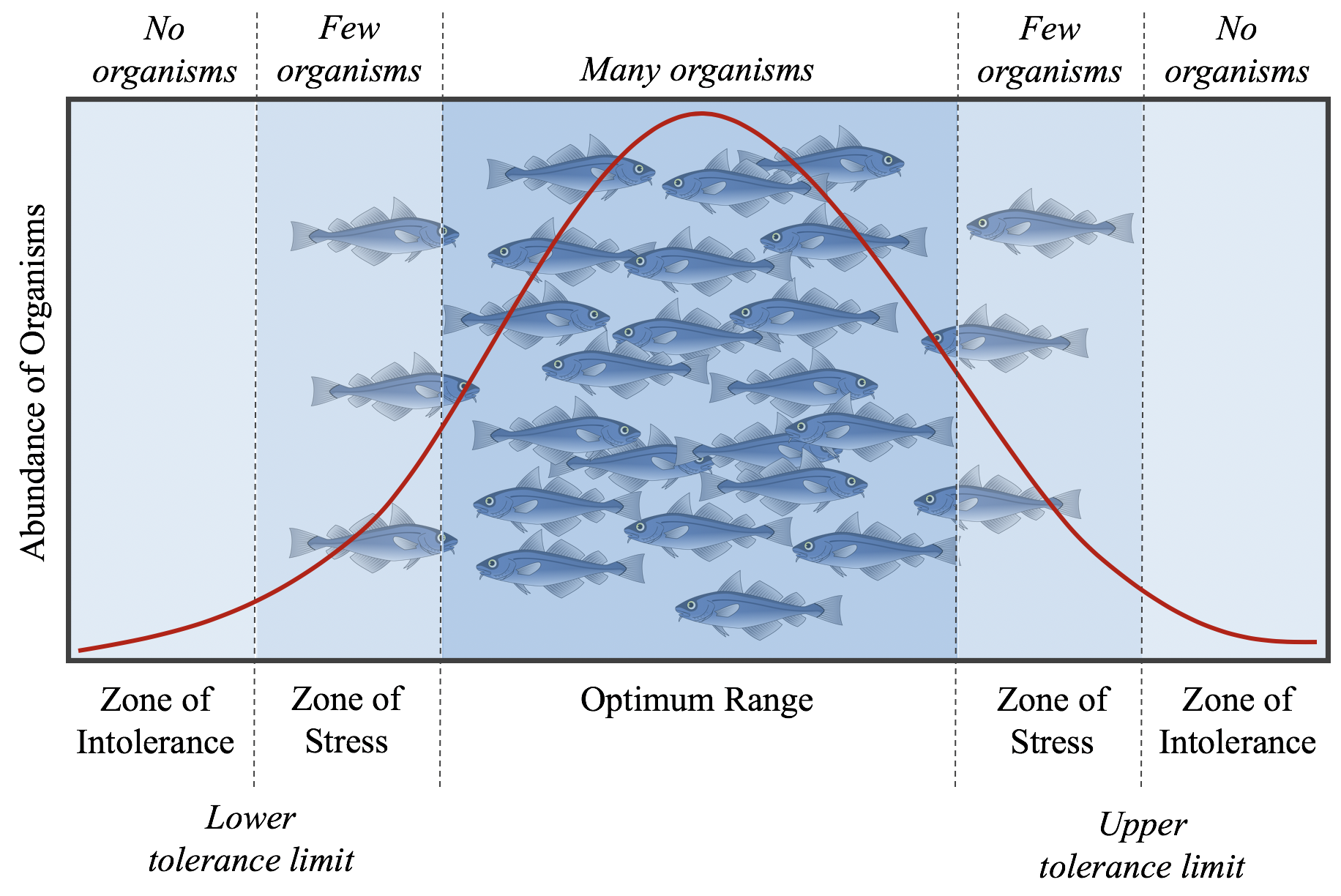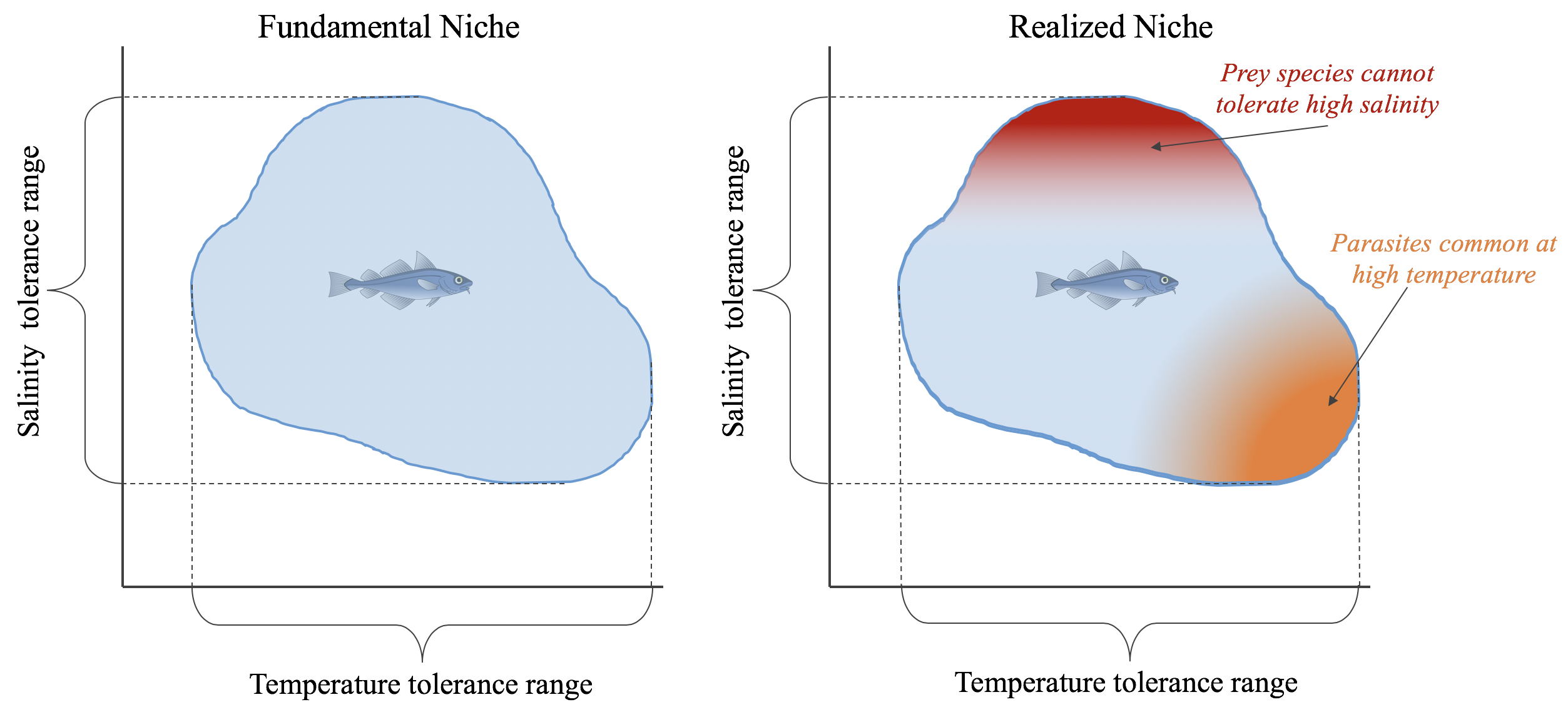5.1: The Ecological Niche
- Page ID
- 62278
An important concept in ecology, which will be discussed in several contexts throughout the quarter is the ecological niche. A species’ ecological niche is the abiotic and biotic conditions the species requires in order to grow, reproduce, and survive. Every species, therefore, has a fundamental niche, which are the abiotic conditions the species can physiologically tolerate, as well as a realized niche, which is driven by species interactions. For example, consider a species of fish living in the ocean (Fig 5.1.1).

This species has certain physiological tolerances in temperature, salinity, etc, that determine where the species can exist. Each of the abiotic factors has an optimum range, where the species will be abundant. Outside of this optimum range (both above and below it), are zones of stress, where the species can survive, but experiences physiological stress and will be less common than in the optimum range. Beyond the zones of stress, are zones of intolerance, which represent conditions the species cannot tolerate and in which it will not be found. The tolerance ranges for all relevant abiotic conditions represent the species fundamental niche (Fig 5.1.2). Species interactions such as predation, parasitism, mutualisms, etc may result in this species not being found throughout its entire fundamental niche. For example, if this fish’s prey species do not occur in some areas of the fundamental niche, then this fish species may not occur there even though it could physiologically tolerate these conditions.

The example above illustrates how a species' realized niche might be reduced or contracted compared to the fundamental niche; however, species interactions can also expand the realized niche. For example, the resource acquisition section discussed root mutualisms that many plants form with mycorrhizal fungi and Rhizobium bacteria, which help the plant access soil nutrients. These mutualisms can expand the minimum soil nutrient availability in which the plant can survive, expanding its fundamental niche (Fig 5.1.3). We will consider the impact of species interactions on the niche in more detail in the species interactions sections.



